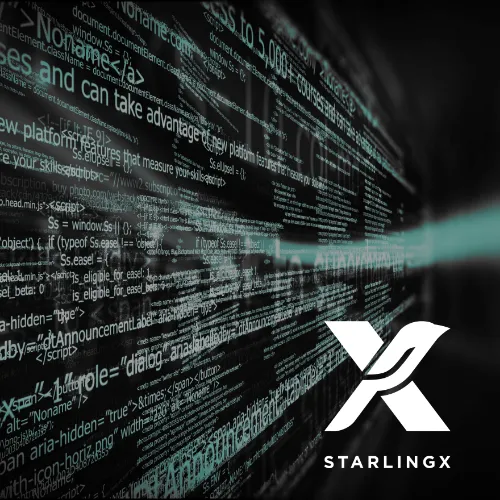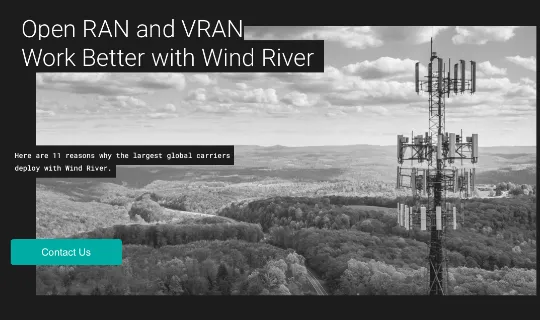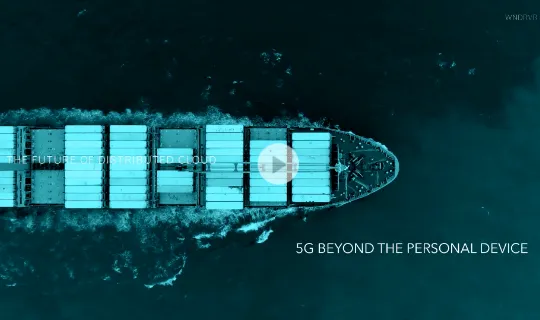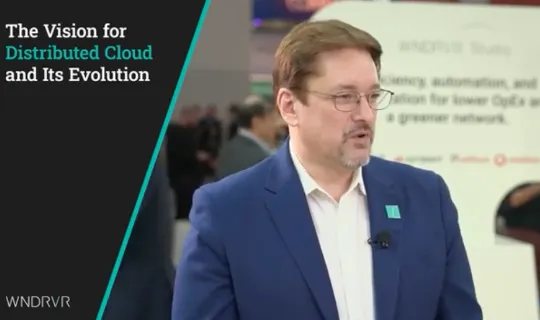Containers for Telco
Edge Networks
Wind River provided the first cloud-native, container-based virtualization solution to complete an end-to-end, fully virtualized 5G data session on a live network.
Wind River helps communications service providers (CSPs) control their network costs with containers.
Communications service providers started virtualizing their network more than 10 years ago and have more recently been focused on virtualizing the radio access network (RAN), as it represents at least 60% of the cost of the network. Wind River® is the first distributed cloud infrastructure provider to deploy a container-based virtual RAN solution to a production telecommunications network at scale.

Virtualizing the Telco Edge
CSPs recognized a need to update their networks to prepare for and realize the benefits of 5G. That need included updating the RAN to break from reliance on purpose-built and rigid equipment and to move to a far more nimble, flexible, and cost-effective alternative. The solution is to disaggregate and virtualize the network into three key components: hardware, software infrastructure, and applications, building on the concept of Network Functions Virtualization (NFV).
Containers for Efficiency and Scale
The older solutions used virtual machines (VMs) to virtualize RAN components such as baseband units and remote radio heads, enabling them to run on software. But early on, Wind River realized that virtualizing the RAN using containers would provide a more lightweight and scalable environment that is easier to manage than VMs. Containers are also easier to deploy and they enable more efficient resource utilization. In addition, containers offer more options for orchestration to manage the lifecycle of vRAN containers. This includes deployment, scaling, load balancing, automated recovery, and ensuring smooth operation of virtualized RAN functions.


It Starts with Open Source
In 2018, Wind River cofounded StarlingX as a Kubernetes, container-based, distributed cloud infrastructure open source project. StarlingX supports both containers and containerized VMs and can meet a variety of use cases. It is particularly well suited for those with low-latency, high-availability, and geo-distributed requirements. Wind River Studio Cloud Platform is commercially supported StarlingX.
Today, Wind River Studio provides Verizon with a cloud-native, Kubernetes- and container-based software infrastructure, which delivers ultra-low latency and high availability for national deployment of virtualized 5G RAN. The Wind River solution is integrated with best-in-class vRAN applications, providing single-pane-of-glass and zero-touch automated management, as well as network analytics.
Container Workloads for the RAN, MEC, and More
CSPs are now moving toward Open RAN (O-RAN), which provides the virtualization benefits of vRAN with the addition of a standardized platform where multiple vendors can collaborate on O-RAN implementations. Container technology can be used to integrate diverse components and facilitate collaboration from multiple vendors by providing a standardized and portable execution environment.
Open RAN components, which include the Radio Unit (RU), Distributed Unit (DU), and Central Unit (CU), can all be containerized. Studio provides the infrastructure to deploy and manage containerized DU and CU applications. This is accomplished via Studio Cloud Platform as described above; Wind River Studio Analytics, which provides full stack monitoring and optimization; and Wind River Studio Conductor for automation and orchestration.
Studio is not limited to the RAN. By leveraging container technology, Wind River can offer the benefits of agility, scalability, resource efficiency, and ease of management to enable our telecommunications customers to run a variety of containerized workloads such as vRAN, O-RAN, cell site routers, mobile edge computing (MEC), and more.













